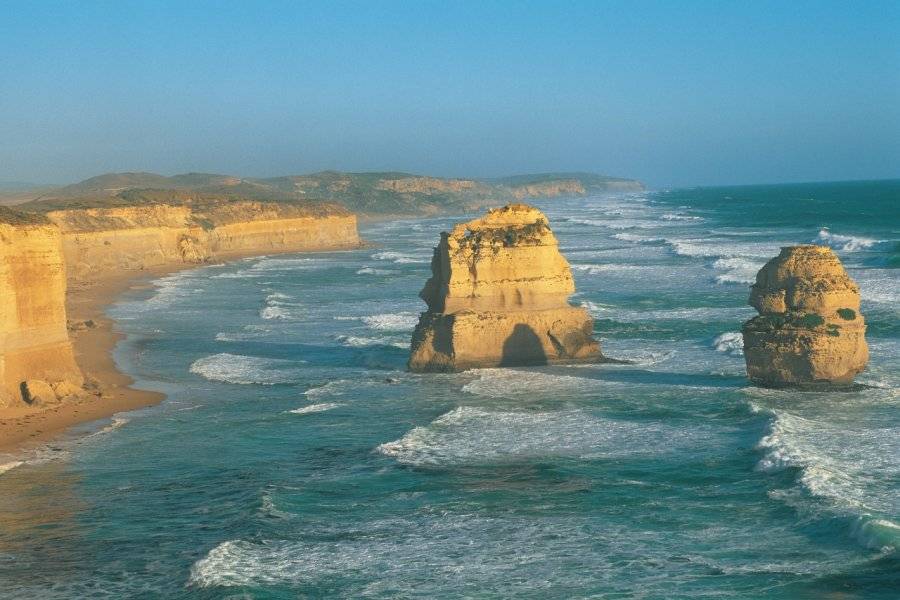Created in 1964, this park preserves the breathtaking limestone formations along the coast of the Great Ocean Road.
Created in 1964, this park covers an area of 17.5 km² and is home to the dizzying limestone formations along the coast.
Between Princetown and Port Campbell
Gibson Steps, with its rock-cut steps, offers a breathtaking view of the First Apostle along Gibson Beach. Swimming here, as on all stretches of the coast, is extremely dangerous.
The Twelve Apostles are the best-known limestone spires. You can watch the erosion of the rocks intensify over time from wooden walkways along the cliffs.
The Razorback is a majestic long rock, resembling a gigantic ship on the waves.
Loch Ard Gorge is a breathtaking gorge where the ocean juts out into the limestone rocks, which host a double beach. A staircase takes visitors down to the beach.
Muttonbird Island lies some 60 metres from the shore. Between April and October, it becomes a haven for thousands of seabirds. The best observation period is January-February.
Thunder Cave is a natural cave set back from the cliff line.
Between Port Campbell and Peterborough
The Arch is a rocky arch in the middle of the ocean.
London Bridge, isolated from the mainland when the edge closest to the shore collapsed in 1990.
The Grotto is both a cave and a natural pool at rising tide. The closest access is via a wooden staircase.
Did you know? This review was written by our professional authors.
Members' reviews on PORT CAMPBELL NATIONAL PARK
The ratings and reviews below reflect the subjective opinions of members and not the opinion of The Little Witty.


